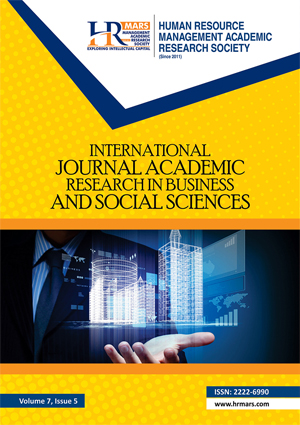
ISSN: 2222-6990
Open access
Many researchers have proven English to be an international language that extends beyond limitation and imagination. The English language is widely spoken across the world to the extent that it has varieties. A number of countries and regions especially British and America have their own ways and style of spelling English words, using irregular verbs past and past participle, using English vocabularies, abbreviating words, interpreting words, pronouncing words, expressing sounds, pronouncing accents, pronouncing numbers, using grammars, describing events, applying words and inserting collective nouns. The current study attempts to specifically focus on English dialect variations in Jordan, Britain and America. The study compares English grammars, spellings, pronunciations and vocabularies in these regions. The study extends its analysis to the difficulties encountered by EFL and native speakers in speaking, writing, listening and reading other dialects. To achieve the research objectives, comparative and analytical approaches were adopted. The study concludes that familiarizing oneself with these variations is essential and unavoidable. This is to ensure that a dialect speaker benefits from other dialect speakers, comprehends the content of their message correctly and avoids committing dialect blunders. Consequently, the study recommends that EFL teachers and learners must possess orthographical and oral knowledge of these dialects. It suggests that variations in these regional dialects be incorporated in course-books for educational practices.
Abdul-Jeleel, M. (2013). Geolinguistics in Heritage, Dar Houma, Algeria, p. 23.
Abderrahim, S. (2015). British VS American English for university students teaching purposes: the case of third year EFL students at Tlemcen University. Doctoral dissertation.
Al-Saidat, E. (2009). English in Jordan: Attitudes and Prestige. Indian Journal of Applied Linguistics.
Antonin, D. (1932). “General Phenomenons of Phonetic Evolution in the Franco-Provençaux Dialects”, Institut Phonétique de Grenoble, p. 17.
Beal, J. C. (2010). Figures and tables. In An Introduction to Regional Englishes: Dialect Variation in England (pp. viii–viii). Edinburgh University Press. http://www.jstor.org/stable/10.3366/j.ctt1g0b1mv.3
Castells, M. (2007). ‘Communicative power and counter power in the network society’,International Journal of Communication, 1:238–66.
Crystal, D. (2003). English as a Global Language (2nd ed.). Cambridge: Cambridge University Press. doi:10.1017/CBO9780511486999
Crystal, D. (2022). The Cambridge Encyclopedia of the English Language (4th ed.). Cambridge University Press.
Drbseh, M. (2013). The spread of the English language in Jordan. International Journal of Scientific and Research Publications. 3 (9), 1-5.
Fatina, A. (2011). “Motives for Creativity in the Arabic Language”, Oud Land, a Digital Cultural Magazine.
Fonaay, M. (2006). “Dynamique et Changement”, ed. Peeters Louvain, Paris, p. 49.
Hughes, A., Trudgill, P. & Watt, D. (2013). English accents and dialects: An introduction to social and regional varieties of English in the British Isles. Rout ledge.
Ibrahimi, B. (2015). The Anthropology of Language: Between Purpose and Procedure. Research Journal, Laboratory of Linguistics and Discourse Analysis, University of Wahran, Issue 1.
Kretzschmar, W. (2004). Regional dialects. In E. Finegan & J. Rickford (Eds.), Language in the USA: Themes for the Twenty-first Century (pp. 39-57). Cambridge: Cambridge University Press. doi:10.1017/CBO9780511809880.005
Kretzschmar, W. (2018). The Emergence and Development of English: An Introduction. 10.1017/9781108555777.
Linguistics and World Englishes. (2020). In D. Schreier, M. Hundt, & E. Schneider (Eds.), The Cambridge Handbook of World Englishes (Cambridge Handbooks in Language and Linguistics, pp. 309-584). Cambridge: Cambridge University Press.
Mugglestone, L. (2017). Chapter 8: Received Pronunciation. 10.1515/9783110525045-008.
Muhammad, A. (1969). Al-Wajeez fi Fiqh al-Lughah, 3rd ed., Dar Al-Sharq Publications, Beirut, pp. 279-280.
Munawaroh, M. (2023). Language variation Discovered in the interaction between buyer-sellers at traditional markets. Aksaqila International of Education, Social and Sciences Journal. Vol. 2 No. 1
Pandey, D. & Pandey, P. (2014). Better English for Better Employment Opportunities. International Journal of Multidisciplinary Approaches and Studies. Volume 1. 96-103.
Péter, J., & Robert, W. (2015). Measuring boundaries in the dialect continuum.
Smith, E. (2018). A Comparative Study of British and American English. English Language Studies, 10(2), 45-60.
Thompson, E., & Johnson, J. (2023). "A Comparative Analysis of Lexical and Phonetic Variation between British and American English." Journal of Sociolinguistics, 45(2), 211-230.
Trudgill, P. (1995). Sociolinguistics: An introduction to language and society. London: Penguin Books.
Umar, R. A. (2017). The Common Arabic: A Study in Light of the Linguistic Approach, Anidaa for Publishing and Distribution, Amman, Jordan, p. 51.
Wolfram, W. (1991) Dialects and American English. Englewood Cliffs, NJ: Prentice Hall.
Bader, A. A. M., Azmi, M. N. L., & Hassan, I. (2025). Regional Dialect Variation in English Language. International Journal of Academic Research in Business and Social Sciences, 15(4), 797–808.
Copyright: © 2025 The Author(s)
Published by HRMARS (www.hrmars.com)
This article is published under the Creative Commons Attribution (CC BY 4.0) license. Anyone may reproduce, distribute, translate and create derivative works of this article (for both commercial and non-commercial purposes), subject to full attribution to the original publication and authors. The full terms of this license may be seen at: http://creativecommons.org/licences/by/4.0/legalcode